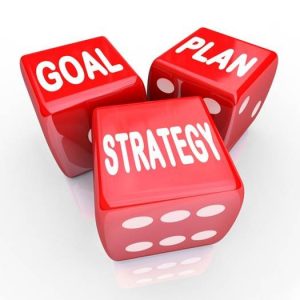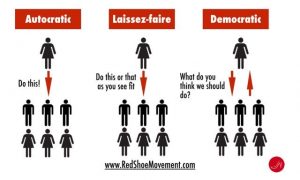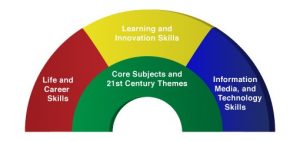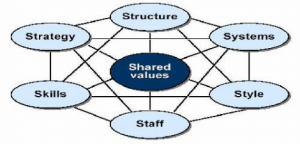To survive the completion and to expand organizations need to restructure people, structure, culture, knowledge, policies, legalities, processes, technologies, product designs, marketing practices, pricing etc. A CEO may see change in terms of organizational structure and strategy, a manager in operations may see change in terms of processes, a manager in technology may see change in terms of systems & tools, a manager in HR may see in terms of training and development or recruitment of new staff, clerical staff may find it difficult to change the paper work format, peons and helpers may find it absurd to see each one stressed in the organization or find new bosses with new thinking. In some cases a change is so complex that no one person has a true end-to-end assessment of it. The McKinsey 7-S model is based on the theory that, for an organization to perform well, to change from time to time, it need to look at the 7 Ss: Strategy, Structure, Systems, Shared Values, Skills, Style and Staff. These seven elements need to be aligned and reciprocally reinforced. The model helps in realigning and identifying problems that need to be worked on to improve performance of the organization. While some models of organizational effectiveness have been outdated, one that has persevered its continuity is the McKinsey 7-S Model framework. It was developed in the early 1980s by Tom Peters and Robert Waterman, two consultants working at the McKinsey & Company consulting firm, the basic premise of the model is that there are seven internal aspects of an organization that need to be aligned if it is to be successful.
Whatever the type of change may be: restructuring, new processes, organizational merger, new systems, change of leadership, new market, recruitment so on – the model can be used to understand how the organizational elements are interconnected. It helps to ensure the wider impact of changes made in one area and how it affects other areas.
McKinsey 7-S Model elements
Strategy
It is a scientific plan devised to maintain and build competitive advantage over the competition. The task involves gaining appropriate budgets and demonst rating, delivering value and ROI from budgets, who is to take charge, who would assist, time frame, what end results expected etc. It helps in annual planning approach. Business strategy is generally created at the upper levels of an organization. Grand corporate strategies can be broken down into objectives and tactics to ensure that the strategy is relevant all the way down the organizational hierarchy. Organizational structure is put into place relatively early in the life of a business, but it can be changed over time as the company evolves. The organizational structure matters in making strategies.
rating, delivering value and ROI from budgets, who is to take charge, who would assist, time frame, what end results expected etc. It helps in annual planning approach. Business strategy is generally created at the upper levels of an organization. Grand corporate strategies can be broken down into objectives and tactics to ensure that the strategy is relevant all the way down the organizational hierarchy. Organizational structure is put into place relatively early in the life of a business, but it can be changed over time as the company evolves. The organizational structure matters in making strategies.
Structure
It clarifies the way the organization is structured and who reports to whom and span of control each person enjoys. The modification of organizational structure is made when it is very essential. A company’s organizational structure must support its strategy. Employees at all levels of the company must be empowered to effectively complete the tasks necessary to achieve organizational objectives, and company structure can aid or hinder employees in their roles. Especially when reporting relations are not clear, and good employees are made to work under incompetent people, organizational goals and objectives become hazy. Structure can also dictate the means by which strategies are formed. Bureaucratic companies tend to generate a majority of strategic ideas at the top levels of management. Companies with flatter structures, on the other hand, often involve a range of employees in strategy sessions.
Systems
The daily activities and procedures that staff members engage in to get the job done. For example, the HR team is one component, the finance and accounts is a component, the service delivery staff another component. The gate keepers another one, so on. Standard Operating Procedures (SOP) help in running the system smoothly. And, making them easier yet scientifically designed helps a lot. Whether documentation is important or not – remember it is the first set of deliverables within an organization process. Considering them unimportant is a lackluster attitude.
Shared Values
These are the organization’s stated values and rules of behavior. It is how the members represent the organization both in terms of their behavior and the shared values. Their interpersonal behaviors and their behaviors with outsiders speak volumes. This is expressed in mission, vision, philosophies and values of the organization. It serves as a guide for all of the company’s decision-making. Shareholders, leaders and employees and customers are generally the target of the mission. It projects the future, of what the organizations hopes to become.
Why shared value is placed in the middle of the model? The reason is shared values emphasizes that these values are central to the development of all the other critical elements. The company’s structure, strategy, systems, style, staff and skills all stem from why the organization was originally created, and what it stands for. The original vision of the company was formed from the values of the creators. As the values change, so do all the other elements.
Style
It represents the style of leadership adopted. The style implies a leader’s style of providing direction, implementing plans, and motivating people. There are many different leadership styles proposed by various authors. Organizations flourish with good leadership and they disappear because of leadership. The culture and goa ls of an organization determine which leadership style fits the firm best. Some companies offer several leadership styles within the organization, dependent upon the necessary tasks to complete and departmental needs. Includes both the way in which key managers behave in achieving the organization’s goals and the cultural style of the organization as a whole.
ls of an organization determine which leadership style fits the firm best. Some companies offer several leadership styles within the organization, dependent upon the necessary tasks to complete and departmental needs. Includes both the way in which key managers behave in achieving the organization’s goals and the cultural style of the organization as a whole.
Staff
It represents the employees and their general capabilities. The success of any organization depends on the employee’s learning spirit. The organizations that continually seek to expand their capacity to create. In today’s highly competitive labor market, the hiring talent is not a joke, organizations have realized that capacities of workers matter a lot. The breakdown of staff in terms of their background, age and sex and characteristics such as IT, finance, marketing needs scientific thinking. Depending on the competitiveness of staff, organizations decide use of contractors and consultants. Many organizations depend on outsourcing. Staff recruitment and retention, and virtual working makes the difference and compels organizations to think about staff development and training.
Skills
The actual skills and competencies of the employees working for the company. It’s critically important that companies develop strategies to manage their people through the crisis if they are to survive and prosper in the long term. Companies nee d workers who can stay organized and focus on the projects at hand. However, company managers must also organize the work of their employees. Organizational skills in the workplace can include general organizing, planning, and time management, scheduling, coordinating resources and meeting deadlines. Distinctive capabilities of key staff can be interpreted as specific skill-sets of team members.
d workers who can stay organized and focus on the projects at hand. However, company managers must also organize the work of their employees. Organizational skills in the workplace can include general organizing, planning, and time management, scheduling, coordinating resources and meeting deadlines. Distinctive capabilities of key staff can be interpreted as specific skill-sets of team members.
The above seven elements are divided into Hard and Soft elements:
Hard Elements: are tangible elements. They are Strategy, Structure and Systems.
Soft Elements: are intangible elements. They are Shared Values, Skills, Staff and Style.
One important point to note is that, in the first version of this model which was published in 1982, “systems” was classified as “soft” element. Since 1982, many processes in very many organizations have been meticulously documented or automated, making them relatively easy to analyze and change. They are therefore shown above as “hard”.













































